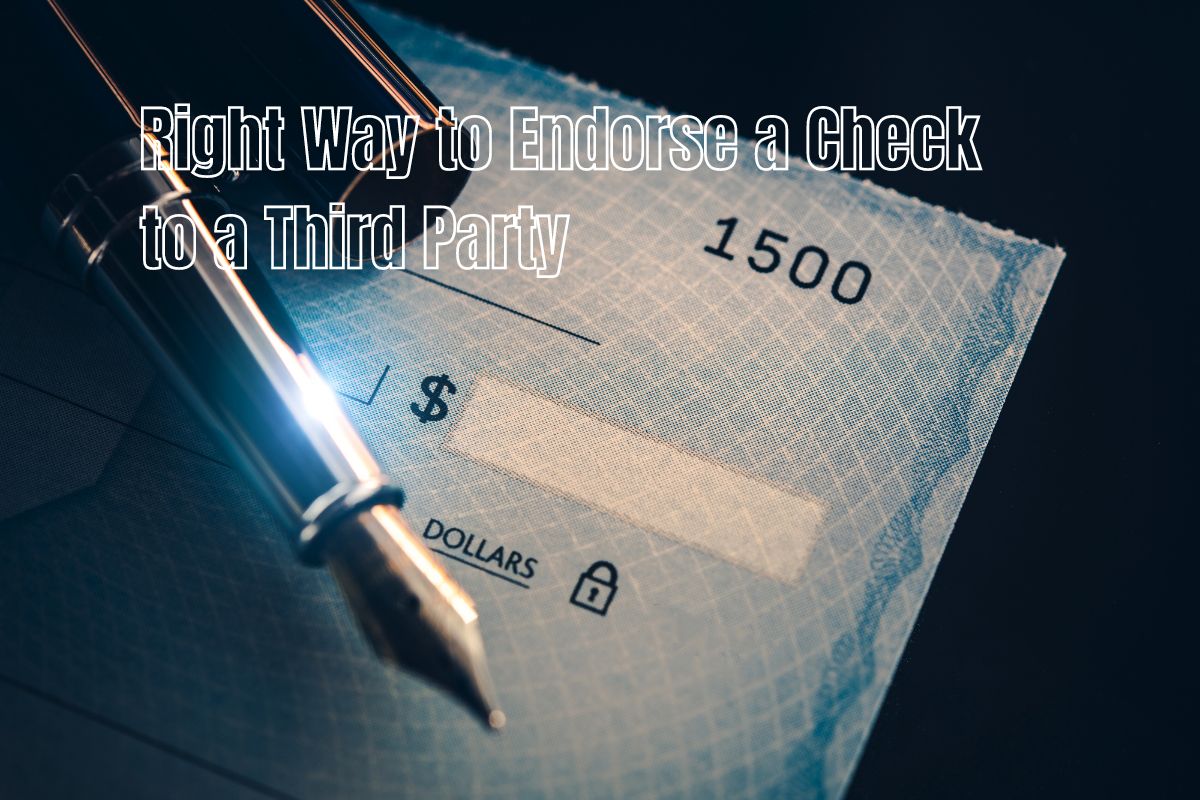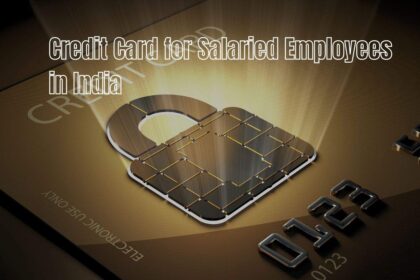In today’s fast-paced world, financial transactions are often conducted electronically. However, there are still instances where physical checks are used as payment. When receiving a check made out to you, there may be situations where you need to endorse it to a third party. In this article, we will explore endorsing a check to a third party correctly and discuss important considerations and best practices to ensure a smooth transaction.
Why Endorse a Check?
- Facilitating Payments: Endorsing a check to a third party allows you to efficiently transfer funds to another individual or organization.
- Convenience: Endorsing a check provides a convenient way to pass on funds without needing cash or alternative payment methods.
Endorse a Check Basics
Before endorsing a check, it’s crucial to understand the different types of endorsements and their requirements. There are three primary types of endorsements:
- Blank Endorsement: This involves signing the back of the check without specifying a particular recipient. It essentially transforms the check into a bearer instrument, allowing anyone possessing the check to cash or deposit it.
- Restrictive Endorsement: With a restrictive endorsement, you specify the intended recipient on the back of the check. This restricts the check’s negotiation to the named individual or organization, ensuring greater security.
- Special Endorsement: A special endorsement involves signing the check and adding a specific recipient’s name. This enables you to transfer the check to the named party, who can further to endorse a check it if necessary.
Steps to Endorse a Check
Follow these steps to endorse a check to a third party correctly:
- Verify the Check: Ensure that the check is legitimate and that you are the intended recipient.
- Review Endorsement Requirements: Determine the required endorsement type based on your intentions and the check’s purpose.
- Prepare the Endorsement: Sign the back of the check, following the appropriate endorsement type.
- Provide Additional Information: Write additional instructions or information alongside the endorsement if necessary.
- Transmit the Check: Pass the endorsed check to the intended recipient securely.
- Communicate Instructions: If there are specific instructions for the recipient regarding the use or deposit of the check, communicate them.
- Maintain a Record: Make a copy or note of the endorsed check for your records and future reference.
Important Considerations
When endorsing a check to a third party, keep the following considerations in mind:
- Trustworthiness: Ensure that you trust the recipient before endorsing a check to them to minimize the risk of fraudulent activities.
- Clear Communication: Communicate your intentions and expectations to the recipient to ensure clarity and understanding.
- Legal Obligations: Understand the legal obligations and responsibilities associated with endorsing a check, especially regarding tax implications or contractual agreements.
Risks and Precautions
While endorsing a check can be a convenient method of transferring funds, it’s important to be aware of the risks involved and take necessary precautions:
- Fraudulent Activities: Be cautious of potential scams or fraudulent schemes when endorsing checks to unknown individuals or organizations. Verify the legitimacy of the recipient before proceeding.
- Confidential Information: Avoid providing personal or sensitive information on the back of the check during the endorsement process to protect your privacy and security.
Legal Aspects
Endorsing a check to a third party is subject to legal regulations and requirements. Familiarize yourself with the following legal aspects:
- Uniform Commercial Code (UCC): The UCC governs commercial transactions in the United States and provides guidelines and rules for check endorsements.
- Bank Policies: Different banks may have specific policies and procedures regarding check endorsements. Familiarize yourself with your bank’s guidelines to ensure compliance.
Alternatives to Endorsement
Sometimes, endorsing a check may not be the most suitable option. Consider these alternatives:
- Direct Deposit: Opt for direct deposit to transfer funds electronically, eliminating the need for physical checks.
- Online Payment Platforms: Explore the use of secure online payment platforms that allow you to send money to third parties without endorsing a check.
Common Mistakes to Avoid
To ensure a smooth and error-free check endorsement process, avoid the following common mistakes:
- Incorrect Endorsement Type: Use the appropriate endorsement type based on your intentions and the check’s purpose.
- Illegible Signature: Ensure your signature on the back of the check is clear and legible to avoid complications when the check is processed.
Best Practices
Follow these best practices when endorsing a check to a third party:
- Double-Check Information: Verify all the information on the check, including the recipient’s name and the amount, before endorsing it.
- Use a Pen: Always use a pen to endorse a check to prevent alteration or tampering.
Fraud Prevention
To protect yourself from potential fraud, implement the following fraud prevention measures:
- Verify Recipient’s Identity: Confirm the identity and legitimacy of the third party you are endorsing the check.
- Secure Transmission: Use secure methods to transmit the endorse a check to the recipient, such as registered mail or secure courier services.
Bank Policies
Be aware that different banks may have varying policies and procedures regarding check endorsements. Contact your bank or refer to their guidelines for specific instructions and requirements for money management.
Mobile Banking and Endorsements
The rise of mobile banking has made the process of endorsing checks more convenient. Many banks now offer mobile check deposit features, allowing you to endorse a checks digitally using your smartphone.
Endorsing Business Checks
When endorsing business checks, consider the following:
- Business Endorsement: If endorsing a check on behalf of a business, ensure you have the authority to do so and follow the appropriate endorsement type.
- Business Verification: Verify the legitimacy and accuracy of the business issuing the check before endorsing it.
Recording Endorsements
Maintaining a record of endorsed checks for personal and business purposes is important. Keep track of the following:
- Date and Details: Note the date of endorsement, check number, and relevant details for easy reference.
- Purpose and Recipient: Document the purpose of the endorsement and the recipient’s name or organization.
Frequently Asked Questions (FAQs)
-
What does it mean to endorse a check to a third party?
Endorsing a check to a third party means signing the back of the check and allowing someone else to deposit or cash it on your behalf.
-
When would I need to endorse a check to a third party?
You may need to endorse a check to a third party when you want someone else to receive the funds from the check, such as when you want to transfer the payment to another person or pay someone else using the funds.
-
How do I endorse a check to a third party?
To endorse a check to a third party, you need to sign the back of the check on the designated endorsement line and write the name of the person or organization to whom you are endorsing the check.
-
Is it safe to endorse a check to a third party?
Endorsing a check to a third party can be safe as long as you trust the person or organization you are endorsing the check to. It’s important to only endorse checks to reliable and trustworthy individuals or entities.
-
Are there any risks associated with endorsing a check to a third party?
There can be some risks associated with endorsing a check to a third party, such as the possibility of the check being lost or stolen during the transfer process. It’s important to take precautions, such as ensuring secure delivery methods or using electronic payment options when available, to minimize these risks.
Conclusion
Endorsing a check to a third party can be a practical solution for transferring funds. You can ensure a secure and seamless transaction by understanding the different endorsement types, following the proper steps, and considering the associated risks and precautions. Always stay vigilant and verify the trustworthiness of the recipient to avoid potential fraud. Remember to comply with legal requirements and consult your bank for specific guidelines. With the rise of digital banking, mobile check deposit options provide added convenience. Explore alternative payment methods when endorsing checks may not be necessary. Following best practices and maintaining accurate records, you can confidently endorse a checks to third parties when needed.










